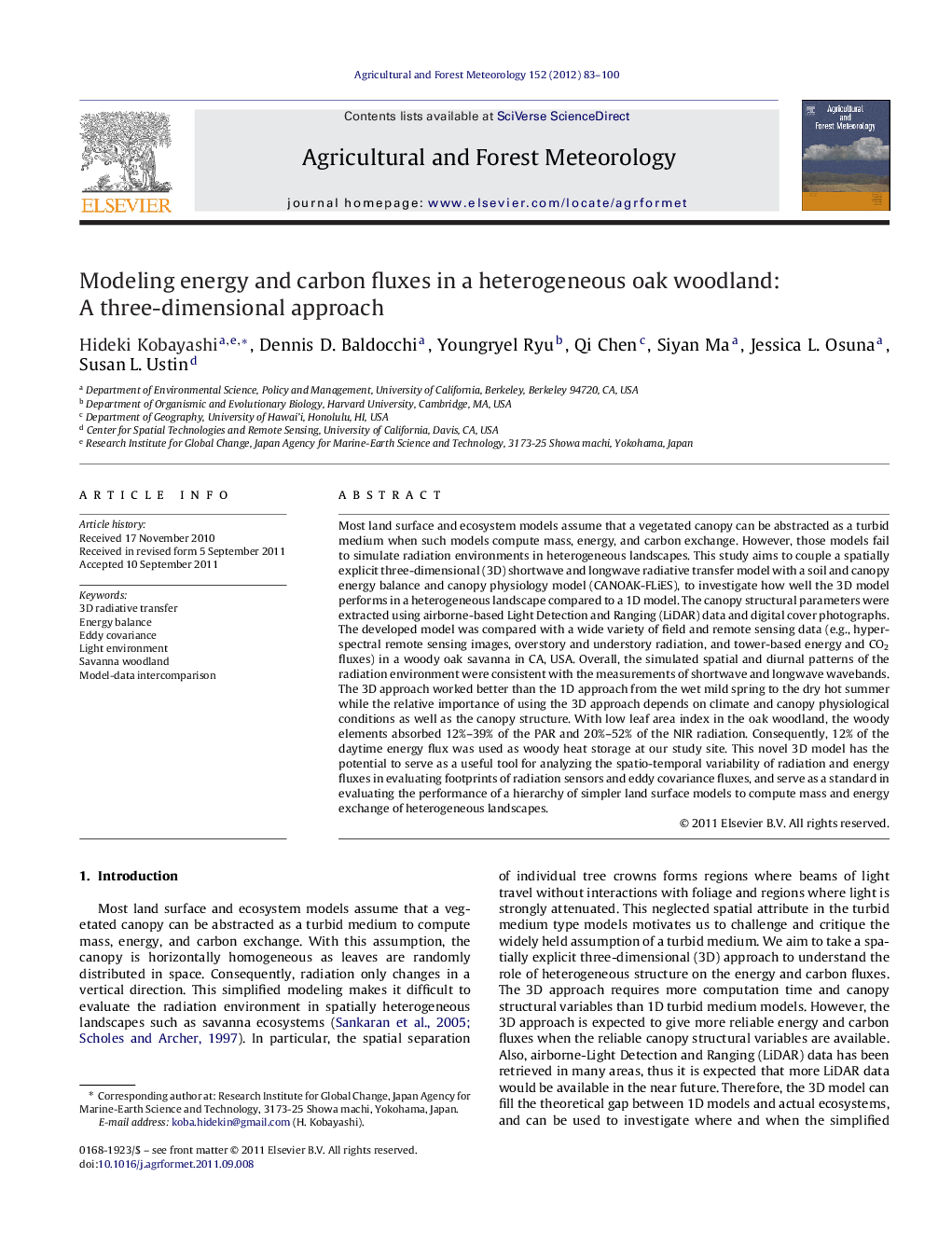| کد مقاله | کد نشریه | سال انتشار | مقاله انگلیسی | نسخه تمام متن |
|---|---|---|---|---|
| 81963 | 158364 | 2012 | 18 صفحه PDF | دانلود رایگان |

Most land surface and ecosystem models assume that a vegetated canopy can be abstracted as a turbid medium when such models compute mass, energy, and carbon exchange. However, those models fail to simulate radiation environments in heterogeneous landscapes. This study aims to couple a spatially explicit three-dimensional (3D) shortwave and longwave radiative transfer model with a soil and canopy energy balance and canopy physiology model (CANOAK-FLiES), to investigate how well the 3D model performs in a heterogeneous landscape compared to a 1D model. The canopy structural parameters were extracted using airborne-based Light Detection and Ranging (LiDAR) data and digital cover photographs. The developed model was compared with a wide variety of field and remote sensing data (e.g., hyper-spectral remote sensing images, overstory and understory radiation, and tower-based energy and CO2 fluxes) in a woody oak savanna in CA, USA. Overall, the simulated spatial and diurnal patterns of the radiation environment were consistent with the measurements of shortwave and longwave wavebands. The 3D approach worked better than the 1D approach from the wet mild spring to the dry hot summer while the relative importance of using the 3D approach depends on climate and canopy physiological conditions as well as the canopy structure. With low leaf area index in the oak woodland, the woody elements absorbed 12%–39% of the PAR and 20%–52% of the NIR radiation. Consequently, 12% of the daytime energy flux was used as woody heat storage at our study site. This novel 3D model has the potential to serve as a useful tool for analyzing the spatio-temporal variability of radiation and energy fluxes in evaluating footprints of radiation sensors and eddy covariance fluxes, and serve as a standard in evaluating the performance of a hierarchy of simpler land surface models to compute mass and energy exchange of heterogeneous landscapes.
Figure optionsDownload as PowerPoint slideHighlights
► We coupled a 3D radiation transfer model with an energy exchange model.
► The comparisons were conducted using intensive field and remote sensing data.
► The developed 3D model performed better than the1D model in oak woodland.
► The importance of 3D approach depends on climate and physiological conditions.
► The results show the importance of including woody elements when LAI is low.
Journal: Agricultural and Forest Meteorology - Volume 152, 15 January 2012, Pages 83–100